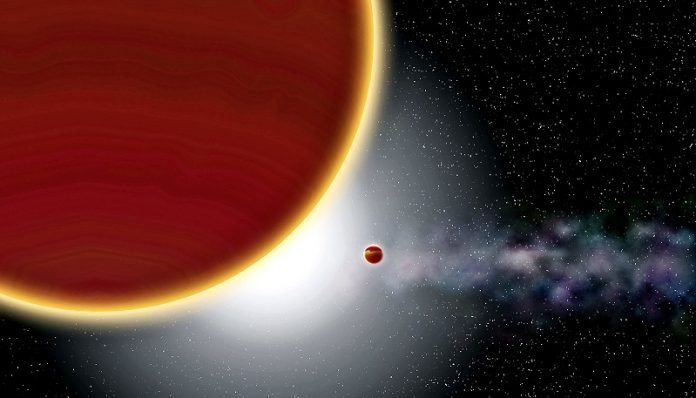
Astronomers have discovered a new planet around a nearby star that is nine times the mass of Jupiter and more than 2,800 times the mass of Earth.
It is the second giant plant scientists have discovered in orbit around β Pictoris, a star that is relatively young (23 million years old) and close (63.4 light years), and surrounded by a disk of dust.
The β Pictoris system has fascinated astronomers for the last thirty years since it enables them to observe a planetary system in the process of forming around its star.
Scientists have discovered comets in the system, as well as a gas giant, β Pictoris b, which direct imaging detected and Anne-Marie Lagrange, a researcher at the Institut de Planétologie et d’Astrophysique de Grenoble, described in 2009.
This time, the team had to analyze more than 10 years of high-resolution data, which they obtained with the HARPS instrument at ESO’s La Silla Observatory in Chile, in order to indirectly detect the presence of β Pictoris c.
This second giant planet completes its orbit in roughly 1,200 days, and is relatively close to its star—approximately the distance between our sun and the asteroid belt, whereas β Pictoris b is 3.3 times more distant.
The researchers hope to find out more about the planet from data from the GAIA spacecraft and from the future Extremely Large Telescope now under construction in Chile.
“The newly discovered planet Beta Pictoris c is a part of a planetary system where planets have for the first time been discovered both through direct imaging and via indirect techniques,” says Paul A. Wilson of the physics department at the University of Warwick and coauthor of the paper in Nature Astronomy.
“The planet marks an important discovery as it provides us with an excellent candidate for follow-up observations which can give us insight into how planets form, in particular, the way the material is accreted onto the planet embryo.”
Written by Peter Thorley.



